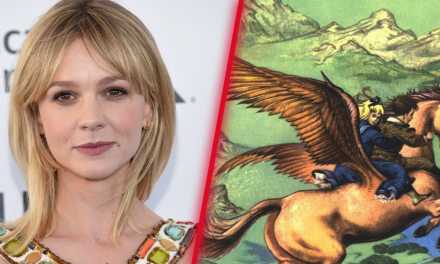Getting Dizzy is an interesting take on the magical girl genre. For one thing: it’s got a lot more rollerblading.
Getting Dizzy: Details

Getting Dizzy is the graphic novel compilation of all 4 issues of the comic book series of the same name. Shea Fontana (DC Super Hero Girls, Wonder Woman Rebirth) is the writer, with Celia Moscote (Juliet Takes A Breath) as the artist, Natalia Nesterenko (League of Legends) as the colorist, and Jim Campbell (Power Rangers) as the letterer. Moscote also drew the cover art above. Lastly, BOOM! Studios remains the publisher of this graphic novel, as they were for the comic books.
Getting Dizzy went on sale on July 19, 2022. You can purchase it from various webstores, including Amazon. Interestingly enough, the BOOM! Studios webstore doesn’t have it. In fact, it doesn’t even have all of the issues of the comic book as of this writing. Perhaps it’s a problem they will remedy later.
Warning: spoilers for Getting Dizzy are below. If you want to get Dizzy for yourself, then stop here, and come back once you’ve gotten rid of your negativity. With some rollerblading and magic rayguns.
Getting Dizzy: Plot Summary
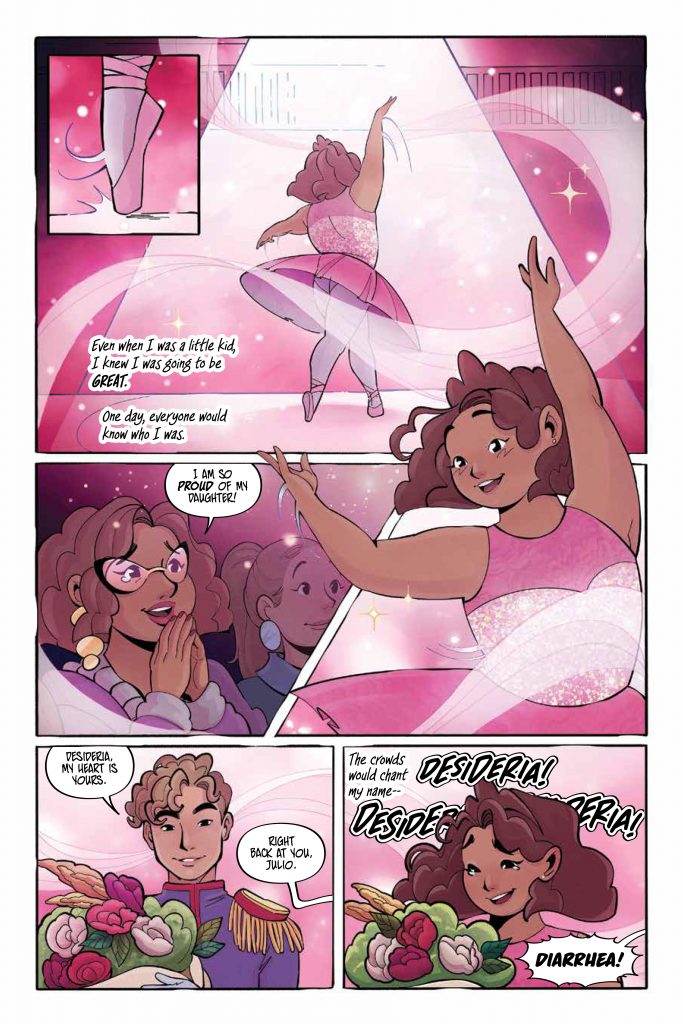
Getting Dizzy introduces us to our main character: Desideria Grace Olsen, or “Dizzy” as she likes to be called. Dizzy is just a normal girl who wants fame and glory but is probably never going to get it. That is until little shadowy imp things pop out of a portal in front of her and cause havoc, and a rainbow-y glowing power flows into her. A passing woman named Chipper reveals that power has chosen Dizzy to be its new bearer in order to defeat those imps called Negatrix. Apparently, Dizzy is now a Burb Defender, and has to defeat these Negatrixes with her newfound powers. First though, Dizzy has to learn to catch them, since these things are pretty fast, and she apparently doesn’t actually know how to rollerblade.
Fortunately, she has a bunch of local girls who can help teach her. Aside from the aforementioned Chipper acting as coach, there’s also Scarlett the cool girl, Payton the nice girl, and AV the smart girl to help teach the essentials of rollerblading. Together, the group quickly become fast friends…figuratively and literally. Now all they have to do is go beat up a bunch of Negatrixes and save their town. Unfortunately, it’s a lot easier said than done.
Dawn of the Mean Plague
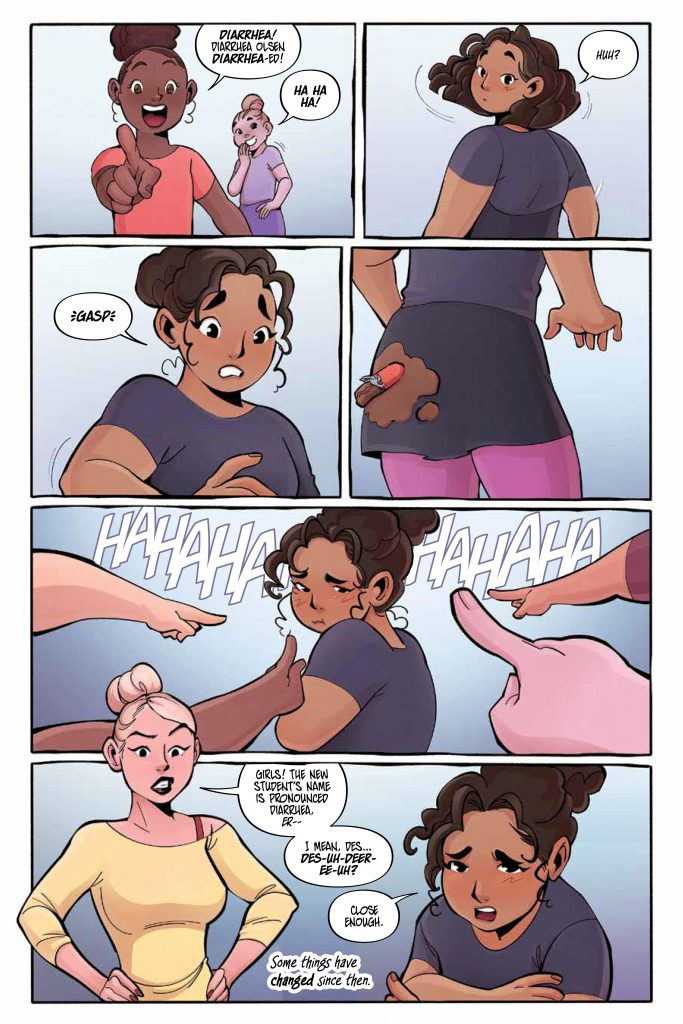
Not only are the Negatrixes invisible without a magical scanner, but they can also possess people and make them do evil by playing on their negative emotions. As it turns out, Dizzy herself isn’t immune to this. After a big fight with her friends, she wanders off into a downward spiral until she arrives at a big crowd outside city hall, where the mayor is apparently whipping up the said crowd into a mob under the influence of a particularly big and nasty Negatrix. It’s there that she realizes that she herself has a big Negatrix preying on her negative emotions. She tries to fight it but runs out of ammo. It’s only the arrival of her friends that leads her to realize that only positive emotions can refill her magic raygun, and allows her to kill her Negatrix once and for all.
After that struggle, the fight against the mayor’s Negatrix seems almost like a piece of cake. Even with it becoming powerful enough to be visible to mundane eyes, it’s no match for the power of friendship, especially once Dizzy figures out how to share her powers with her friends. Things seem to be looking up…right up until the original Burb Defender: Bea Jinx (who’d been missing since before the story began) gives Dizzy a phone call, saying that she needs her help. Help in what? Well, presumably that’s what we’ll find out in the sequel to Getting Dizzy.
Getting Dizzy: The Good
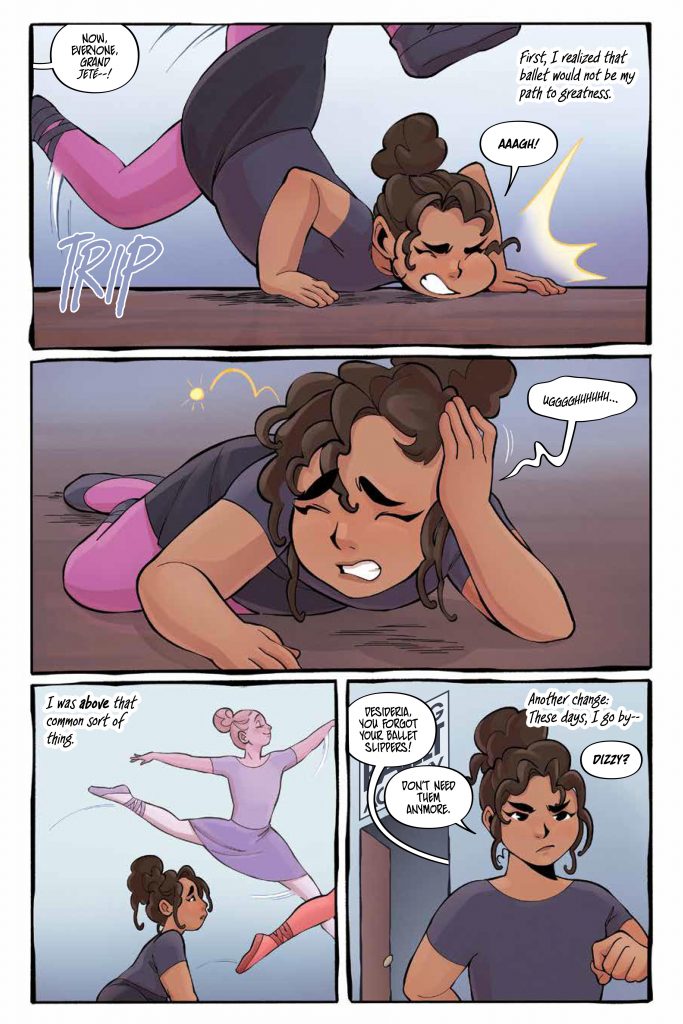
I have to admit: I found the story of Getting Dizzy amusing, but weird and incomprehensible at first because I just couldn’t figure out what genre it was supposed to be. It was only while in the middle of the graphic novel that it finally hit me that this was basically a magical girl story. Once you start judging it by that criteria, then you realize that Shea Fontana has crafted a pretty decent magical girl story with interesting themes and philosophy, and a cast of likable characters (Payton in particular for me). In particular, Chipper’s philosophy regarding the importance of participation awards really made me stop and think deeply on the subject. I give this story a thumb’s up for that alone.
I also found the artwork of Getting Dizzy to be visually appealing. Celia Moscote’s efforts are part of what drew me into reading this in the first place. There’s an almost manga-like quality to the character design and effects that I found appealing as a frequent reader of manga. Keep this up, and I’ll take a look at the sequel once they get around to writing it.
Getting Dizzy: The Bad
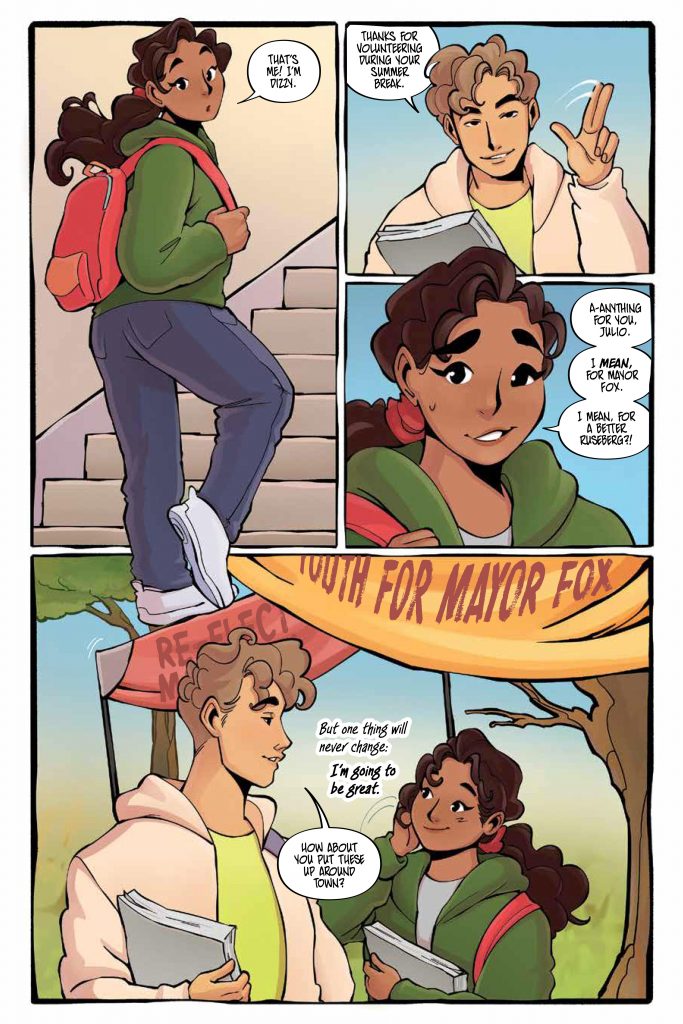
My biggest complaint about Getting Dizzy is none other than Julio: Dizzy’s erstwhile male love interest. He’s the very model of a stereotypical satellite love interest. We don’t know what he does outside of being Dizzy’s love interest. You could remove him entirely from the story, and his absence wouldn’t affect it whatsoever. Unless Julio gets some major character development in the sequel, then I honestly think it would benefit the story for Dizzy to just fall out of love with him.
I’m also disappointed by the lack of any yuri in Getting Dizzy. This honestly seemed like the perfect story for some yuri, and yet there is none. This really makes me hope that there is some in the sequel.
Source: BOOM! Studios

![“Getting Dizzy” SC: Magical Rollerblading Girls [Review]](https://www.thathashtagshow.com/wp-content/uploads/2022/07/getting-dizzy.png)

![It Ends With Us, But Could’ve Ended Sooner [REVIEW]](https://www.thathashtagshow.com/wp-content/uploads/2024/08/It-Ends-With-Us-review-440x264.png)

